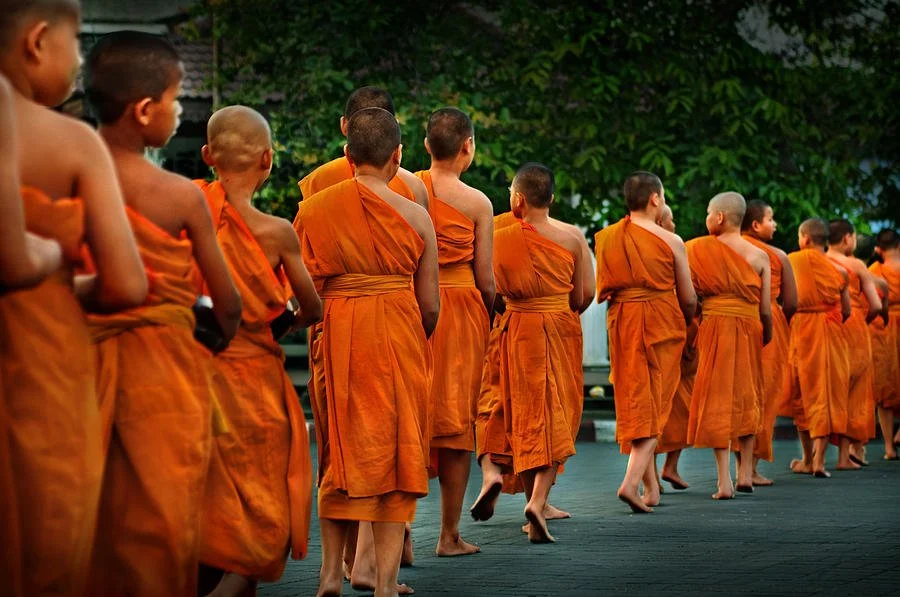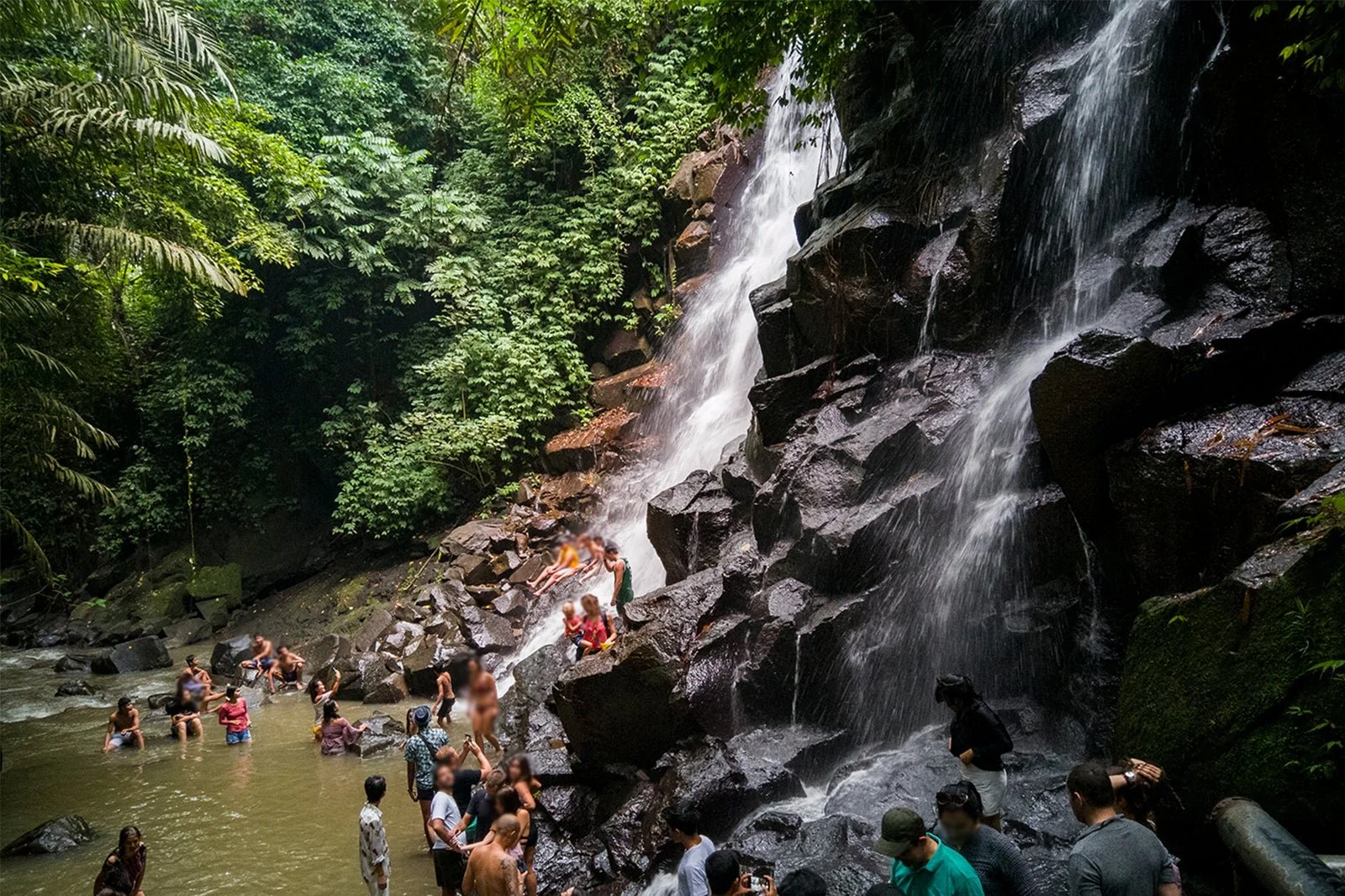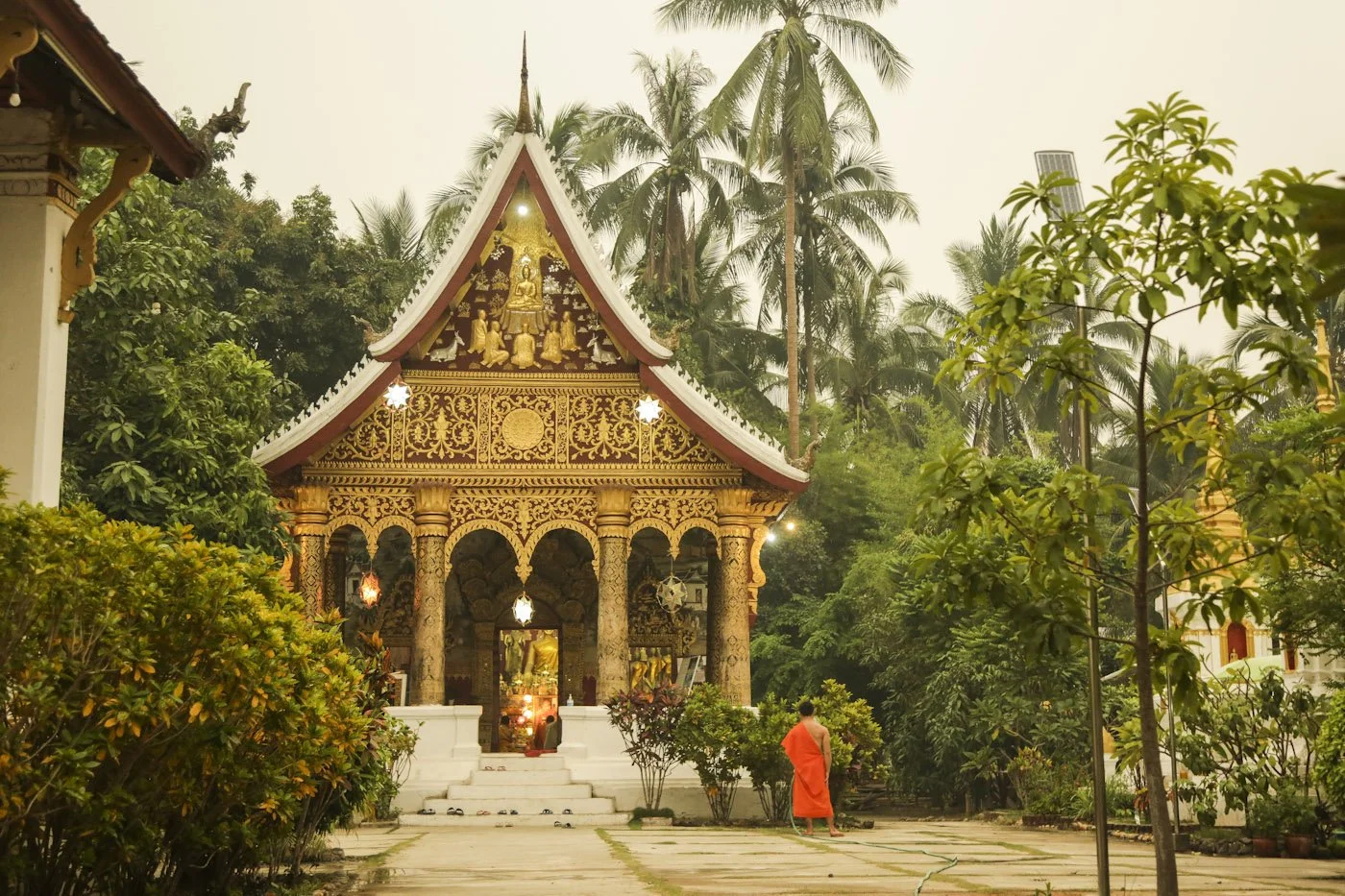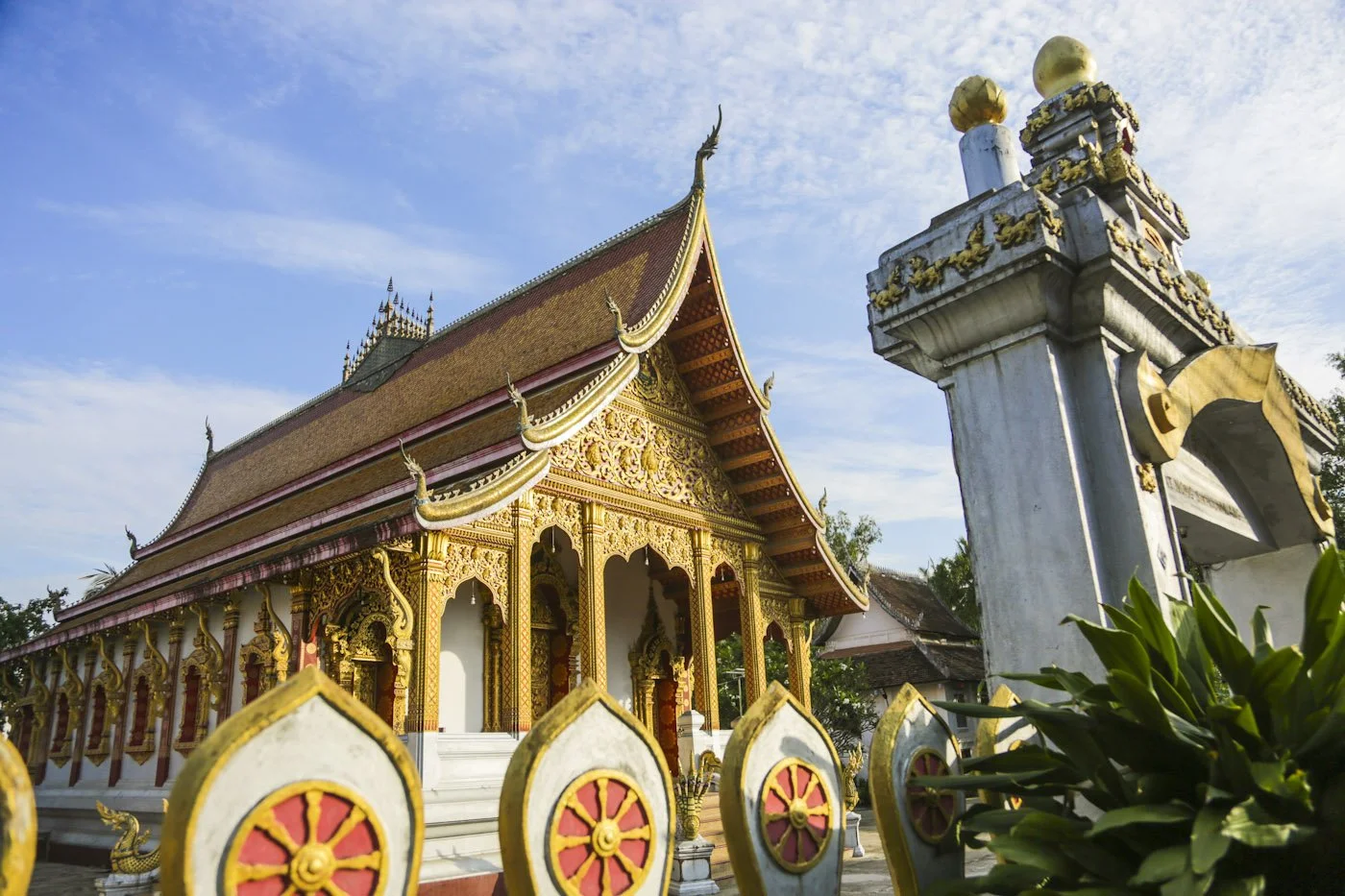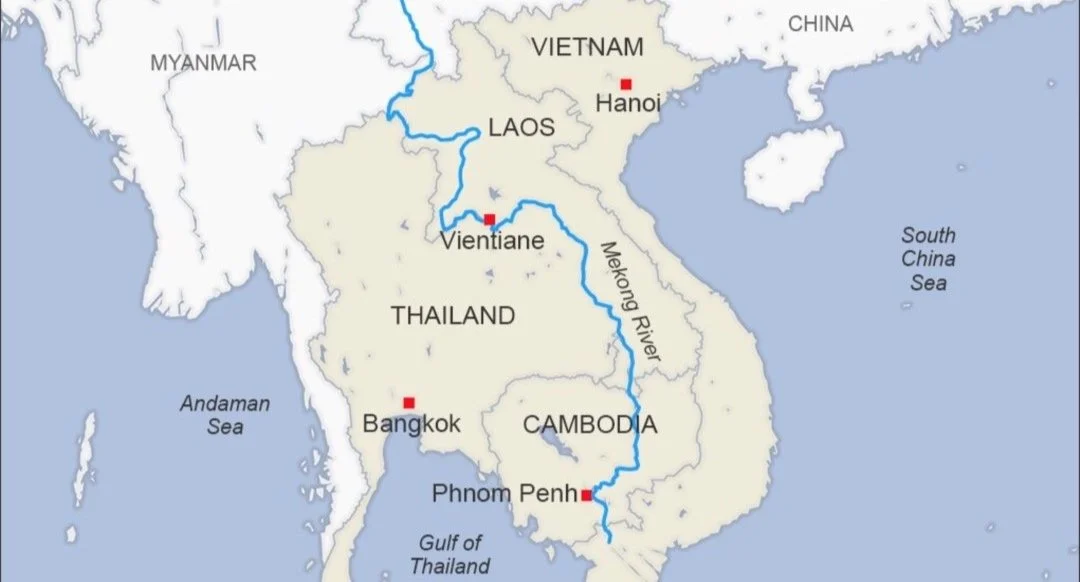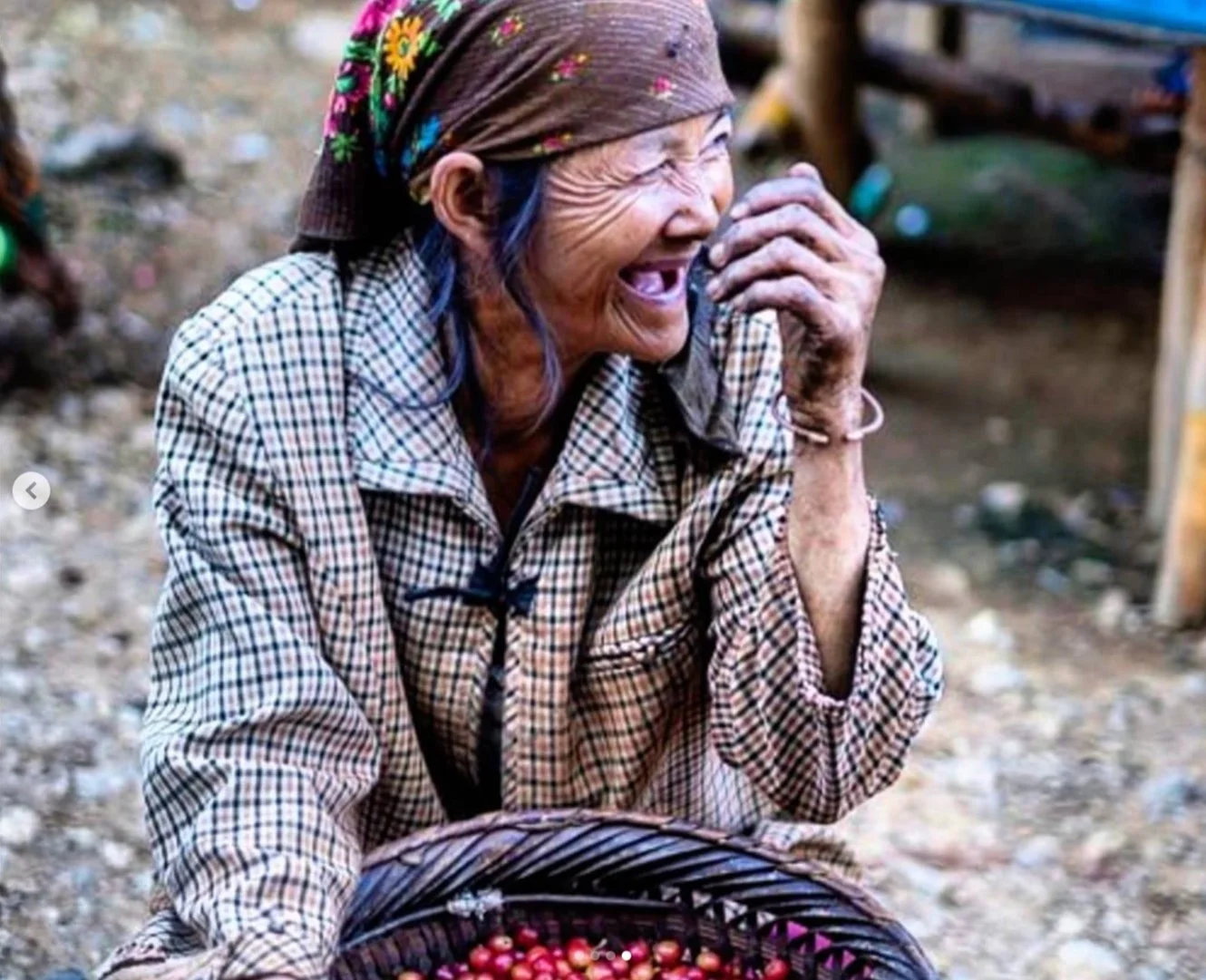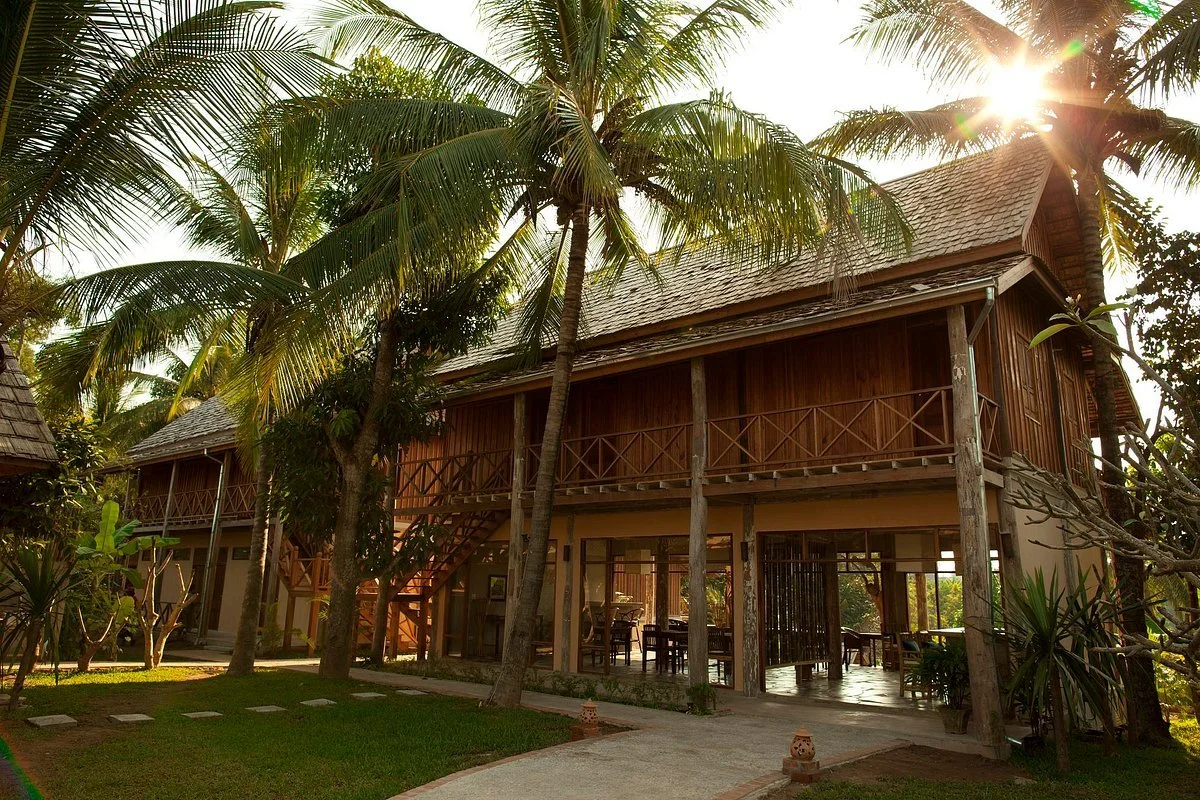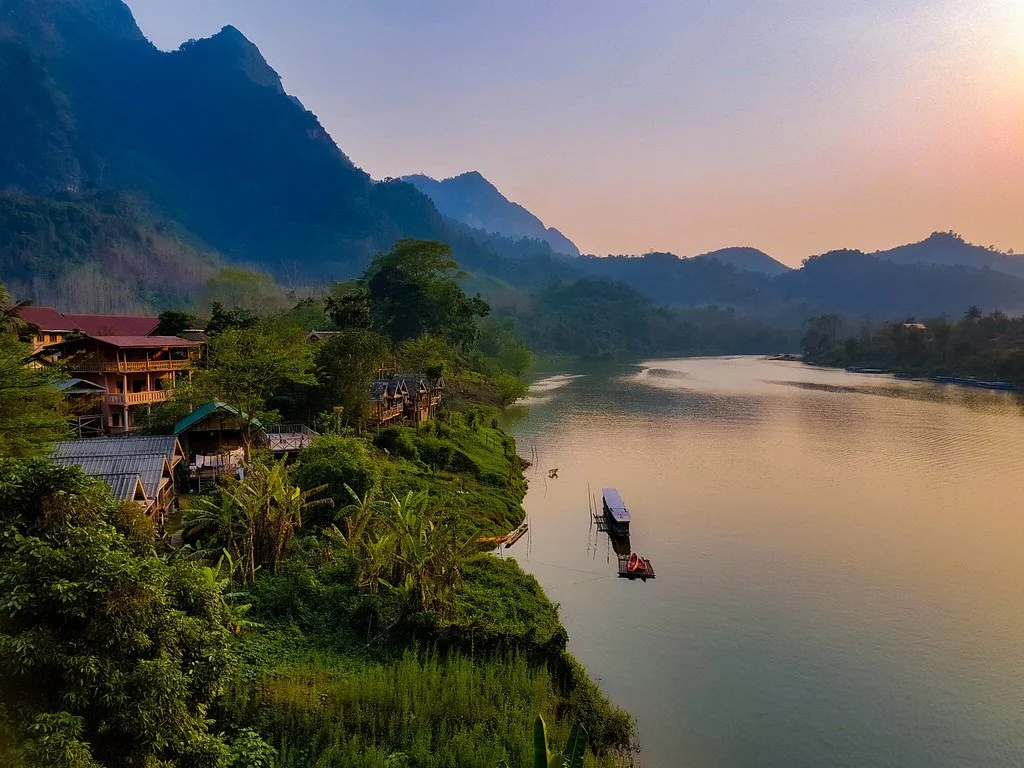LAOS · The Best Cultural Experience in South East Asia
Traveling in South East Asia
Just before the pandemic started, I was solo-travelling for 4 months in South East Asia — visiting Thailand, the Philippines, Vietnam, Laos and Indonesia.
I perceive travelling as a chance to break from daily life comfort and challenge myself. That’s exactly what was missing in SEA. It was way too easy, that it didn’t feel authentic. When you are travelling abroad, you have to adapt to different cultures and be open-minded. In the last decade, South-East Asia became very popular among backpackers, and mass tourism has transformed places of culture, into streets filled with western clubs and spots where take the perfect Instagram picture. I still remember the frustration I felt in Bali, every time there was a beautiful waterfall hidden in the jungle, but instead of enjoying nature, there was a queue of people waiting to take the perfect booty picture.
The exception
The place I was least looking forward to visiting — was Laos — because it was less known, and not idealised by Instagram pictures. It ended up being the most enriching and authentic experience I had in South East Asia. From the moment you step inside of the country, it feels like entering a completely different world, stuck back in time. You are surrounded by Buddhist temples, French colonial houses, and monks walking around the streets.
Why should you visit Laos?
Culturally, Laos was everything I idealised in South East Asia. Since it’s less touristic, traditions and habits remain very strong throughout the country, without feeling any western influence. Even nature and wildlife feel untouched, which makes travelling in Laos a unique and authentic experience.
Locals & Culture
When you are travelling to a hidden gem, you can notice it by the way locals treat you. They are surprised to see foreigners, and the sellers on the streets are not pushy at all. The people I met were shy, but always helpful in case of need. That was a nice change, from the noise of other hectic countries. Agriculture is the mainstay of the economy of Laos. Even in the cities, you are surrounded by rice fields and coffee plantations. The slow pace of development, makes Laos feel like an uncharted adventure every day.
Nature
There is forgotten beauty in Laos. That you’ll find while crossing rickety bamboo bridges, watching water buffalo graze in the rice paddies, and seeing the fishermen head out at dusk as the sun sets over the river. My favourite area was — Northern Laos, where you are surrounded by tall mountains, green jungle and secret waterfalls. There are some hikes with spectacular views in the area of Nong Khiaw.
Buddhism
• RELIGION
In every village in Laos, you will be surrounded by stunning golden buddhism temples. Approximately two-thirds of the Lao population identify as Buddhist and it's a dominant cultural force. The prominent form of Buddhism practised in Laos is — Theravāda Buddhism, where the Buddha is not considered a ‘God'to be devoted to, but more like the respect a student has for a teacher. This religion also borrows elements from animism — a belief that spirits inhabit all objects.
• TEMPLES
Each ethnic Lao village has its own temple — “Wat” , which is the focal point of village festivities and rituals. The wats fill in the mornings and evenings with people chanting Buddhist prayers, that you can admire silently from the outside. For devoted locals, a typical day begins early in the morning at 5AM, with an offering to the monks with rice, that they buy in the market, or they prepare home.
• POLITICAL INFLUENCE
Buddhism used to be the the state religion of the Kingdom of Laos, but since 1975 the country was overrun by a communist government. Communism has not opposed Buddhism, but rather has attempted to manipulate it to support political goals. In the early 1990s, the political control started to be more relaxed, consequently it stimulated a revival of popular Buddhist practices.
Food & Coffee Shops
Lao food is extremely simple, but delicious at the same time. It varies from the sticky rice served in bamboo baskets, spicy grilled vegetables, steamed fish covered in banana leaves, and bamboo soups. If you have an adventurous palate, you can try to eat grilled insects, or just stick with refreshing tropical fruits and mango smoothies. Personally, it's my favourite cuisine in South East Asia, rich in flavour and healthy at the same time.
For the sweet tooth, you’ll be pleased to know that the French left their mark in carbohydrates on Laos as well, since it used to be a French colony in the past. Khao jee — is Lao for bread and it’s common to see vendors selling sandwiches filled with egg, pate, tomatoes, veggies, mayo and ketchup by the roadside. French café culture has become a mainstay in Laos, especially in Luang Prabang, where you’ll find pain au chocolat with Parisian-quality baked goods at Southeast Asian prices.
Travellers
Laos is a hidden gem compared to the neighbouring countries, therefore you don't find mass tourism. Travellers are very unique — with an adventurous spirit, and they rather enjoy quiet walks among Buddhism temples, than parties with crowds of people. In Laos, it’s easy to find peacefulness, because there are no western clubs unless you visit Vang Vieng, the only party place in the county.
No sex tourism
Laos is known to be a very conservative country, due to the influenced of Buddhist thinking, attitudes, and behaviour. Family and tribal relationships is valued above everything else; so much that it is illegal to have sex outside of wedlock. Therefore, prostitution is illegal in Laos, unlike its neighbouring countries. It is regarded as criminal activity, and sometimes the punishments can be quite harsh. Laotian law bans foreigners from having sexual relations with Laotian nationals other than their spouses. The foreign offender can face hefty fines up to $5000 USD, imprisonment, or deportation. Furthermore, most hotels do not allow foreigners to take girls to their rooms as it is officially prohibited. A sign on the back of my hostel said — "No guns, drugs, gambling, and sex with man or woman, who is not your husband or wife".
What do you need to travel in South East Asia?
TRAVEL DEBIT CARD
Saving money while travelling around the world can be a hustle! Different currencies and sky-high exchange fees. Luckily, during my 4 months in South East Asia I found a solution to travel stress-free without having to worry about money — TransferWise — the cheapest way to send money to more than 80 countries. The exchange rates are some of the best you'll find. You can order a debit/credit card for free, which arrives home after one week.
I have been using TransferWise for 3 years, and it has been life-changing especially when travelling abroad!
If you want to be well organized with your expenses while travelling, I recommend you to create ‘jars’ with the TransferWise Bank Account. You can split your savings for different purposes: grocery - restaurants - flights and so on.
Registering on TransferWise is free of charge and if you register through this link, you’ll get a fee-free transfer of up to 500 $.
TRAVEL INSURANCE
In these uncertain times with a pandemic raging throughout the world, there is no better feeling than some certainty when travelling in different countries.
One of the best reasons to buy travel insurance is to have a trip cancellation policy. In certain cases, SafetyWing offers a Covid refund — this made me feel a lot safer while travelling overseas.
If you feel like supporting a small content creator like me, and you need a travel insurance for your next trip, I can wholeheartedly recommend SafetyWing!
What to see in Laos?
The destinations and activities, that I've chosen to list below, are the ones that remained etched in my memory. I want to specify that I visited the Northern part of Laos, and due to lack of time, I did not go further south than the capital Vientiene.
Temples in Luang Prabang
The city of Luang Prabang is the heart of Lao Buddhism. It has been listed as a UNESCO heritage site in 1995 - for its unique and well-preserved architecture, with many French colonial influences, and for its religious and cultural heritage. With more than 34 temples, it is not surprising that life in Luang Prabang revolves around Buddhism, where one of the biggest monk communities is installed. Monks live and pray in the temples, where travellers are welcome to visit if they keep in mind some basic rules — dressing appropriately (keeping shoulders and knees covered) and removing shoes and hats at the entrance. If needed, a traditional sarong can be rented to cover up.
These are some of the temples that I saw in Luang Prabang, and that I recommend visiting. Each temple has its own charm and history.
Wat Xieng Thong · The Golden City Monastery
Vat Xieng Thong, is one of my favourite temples, and one of the largest in Luang Prabang. With its golden facade and fine details, it's a must to see in Laos. The temple, once oversaw the coronation of Lao kings — today, is an important gathering place for annual festivities in Luang Prabang.
💵 Entrance fee: 20,000 kip - $1.68
📍Location: Between Khem Khong road and Sakkaline road
2. Haw Pha Bang
Haw Pha Bang — is Luang Prabang most attractive landmark. It was built to house the statue of Phra Bang — the most sacred Buddha image in the country, which gives the name to the city. The Buddha image in the temple, is bathed by monks and devotees with perfumed water, and this water is then taken home to purify the family.
💵 Entrance fee: 30,000 kip - $2.50 — includes also the entrance fee to the Museum
📍Location: Inside the Royal Palace complex, on Sisavangvong road
3. Wat Pa Phai · The Monastery of the Bamboo Forest
This small temple is thought to be one of the oldest temples in Luang Prabang, built in 1645, although it is unclear if it was built then or in 1815. The walls of Wat Pa Phai are painted with sequences of the daily Lao life in the late 19th century in Tai–Lao style.
It is also called the "Monastery of the Bamboo Forest", because if you see names of temples with the word "Pa" or "Pak" in it, there is likelihood that these are retreats that were built deep in the forest.
💵 Entrance fee: Free entrance
📍Location: On Sisavangvatthana road, opposite the Institut Français
4. Wat Sensoukharam · The Temple of the 100,000 treasures
Sensoukaram is another beautiful temple, decorated with golden leaves. Its name ‘Sensoukharam’ means 100,000 treasures, and there are several legends around this meaning. Some say that the temple got this name because it was constructed with 100,000 stones from the Mekong river. Others say that it takes that name because it required 100,000 kip for its construction back in 1718.
💵 Entrance fee: Free entrance
📍Location: On Sakkaline road, opposite of a tiny Lao noodle shop (whose lady cooker has the best Khao Soi in Luang Prabang).
5. Wat Nong Sikhounmuang
This temple is located in one of the quietest streets of Luang Prabang, in a tiny long road along the Mekong river. Despite its hidden location, is one of the prettiest temples I saw. After being damaged by time and weather, it was completely rebuilt in 1965, with reinforced concrete typical of the Thai style. This temple also houses one of the largest pagodas in the city.
💵 Entrance fee: Free entrance
📍Location: On the Kounxoua road, opposite the Elephant restaurant
Sai Bat · Morning alm
Luang Prabang
Sai Bat — means morning alm: a longstanding tradition in Laos Buddhist culture. In observing it, the devoted offer food to monks throughout Luang Prabang every morning. Also, the tourists can join from 5.30 to 6.30, and you can buy sticky rice to offer to the Buddhist monks. Most visitors witness the ceremony in the old city centre of Luang Prabang, along Sakkaline Road in particular. Personally, a very enriching experience, that I absolutely recommend you to see, if you want to dive deeper into Laotian culture. After the morning alm, you can have breakfast in the street along the Mekong River. Many coffee shops are already open between 6:00 and 6:30 AM.
The ritual
You can observe the ritual in silence and contribute with an offering only if it's meaningful for you. If you don't want to make an offering, please keep an appropriate distance and don't get in the way of the monk procession. For offerings, buy sticky rice at the local market earlier that morning, or from the vendors who prepare the rice at points along the monks’ route. Be careful not to touch the monks, and try not to use camera flashes.
Breakfast on the Mekong River
The Mekong River
The Mekong River — is the longest river in South East Asia, the 7th longest in Asia, and the 12th longest in the world, with a length of 2,700 miles - 4,350 km. It rises in China, through the eastern part of the Tibetan Autonomous Region, and it flows in Myanmar, Laos, Thailand, Cambodia and Vietnam.
Thee Mekong River boat tour
Luang Prabang is one of the cities that is split by the river, and when you walk along Khem Khong Road, you can find some locals that sell the "Mekong River boat tour". I recommend it if you want to admire the city from a different perspective. The tour lasts 1 hour and it crosses the entire city. It’s possible to go during the day, my advice it’s to go just before sunset when the purple colours of the sky reflect on the Mekong River. If you are a solo traveller like me, my advice is to wait for someone else to join the tour with you, so that you can split the price.
'Breakfast with a view'
Another 'must do' in Laos, is to have breakfast in Saffron Coffee — my favourite coffee shop along Khem Khong Road. I used to stop by, after joining the morning alm — and enjoy a delicious French-inspired breakfast, facing the Mekong River. They have a small bakery with a good internet connection for digital nomads, and a terrace outside to enjoy the stunning view. The bakery selection is outstanding, not to speak about the quality of the coffee, for sure the best I had in South East Asia.
Here, are my favourite breakfast selections that I recommend:
Mango Coconut French Toast - (the best!)
Tortilla Breakfast Wrap
Gingerbread pancakes
— accompanied with a delicious organic cappuccino
Coffe culture in Laos
The first coffee plants were brought to Laos in the early 1900s by French colonialists. They experimented with growing coffee in the cooler northern region of the country. About a third of Lao coffee production is the sweeter and higher-value Arabica, while much of the rest is the cheaper and easier to cultivate Robusta. Much of the coffee is grown by villagers and today, more organic coffee can be found in Laos, which is either sold to larger distributors in Thailand and Vietnam, or to smaller coffee collectives.
@saffroncoffee
Saffron Coffee in Luang Prabang, partners with over 800 Lao coffee growers. Lao women transport coffee arabica cherries for the coffee shop, whose goals are to produce organic coffee, and to improve the local farmer's life.
Restaurant recommendations
If you are spending few days in Luang Prabang, I recommend you to try these Restaurants:
Big Tree Cafe & Restaurant
⬆️ Try these typical Laotian speciality: bamboo soup - steamed fish in banana leaves - green papaya salad - baguette paté
📍LOCATION
Ounkham Road, 67 Ban Vat Nong, Luang Prabang
🕦 OPENING TIME
Monday - Saturday
9:00 am to 9:30 pm
They serve a selection of food based on a mix of Lao, Korean style and European-based recipes. The food is always prepared fresh, and the recipes combine healthy ingredients, to provide the best taste and nutritional value, using organic wherever possible. In most cases, food has been growing only a day or two before it is served to customers from local farms.
I recommend you to try — the steamed fish in banana leaves. If you are lucky, try to get the seat with the window facing the Mekong River. On the second floor, they also have a photo gallery, with beautiful pictures of Laotian's daily life.
@mandadelaos
Manda de Laos — has great food in a magical and romantic fairy tale setting, around the lotus ponds. A must if you are looking for a dining place in Luang Prabang, immersed in nature. Its 3 lily ponds have been registered as a UNESCO World Heritage site, since 1995.
Prices are a little bit higher compared to other restaurants, but still worth it, considering the location and the food presentation. My advice is to call at least 1 day in advance to take a reservation since this place has become so popular. I recommend you to try Bamboo soup, a typical Laotian dish.
📍LOCATION
Ounkham Road, 67 Ban Vat Nong, Luang Prabang
🕦 OPENING TIME
Tuesday - Sunday
Lunch: 12:00 pm to 9:30 pm
Bar: 12:00 pm to 12:00 am
Where to stay in Luang Prabang?
Located by the majestic Nam Khan River only a 10-minute walk from the city centre, My Dream Boutique Resort offers rooms with a private balcony. Guests can enjoy the Laotian cuisine in the Hotel’s restaurant. The resort also features an outdoor swimming pool with beautiful views.
Phar Khew Lom Viewpoint
Nong Khiaw
Nature-wise, Nong Khiaw was probably my favourite place in Laos, thanks to its stunning mountains, hiking trails immersed in the jungle, tranquillity, and scenic sunsets. All you need is good hiking shoes, an adventurous spirit, and better not to be afraid of spiders, (but If I made it, so can you).
Nong Khiaw is located 140 km northeast of Luang Prabang, in Northern Laos. You can reach it by bus from Luang Prabang — almost every accommodation offers a daily transport service to the little village. The travel takes 3 hours, and expect very bumpy roads, but you will get rewarded with an amazing scenery.
The Hiking Trail
Phar Khew Lom Viewpoint is less known than Pha Daeng Peak Viewpoint, but after doing both, I found this one more impressive. It takes about one hour to reach the summit, depending on your fitness level. When you reach the top, you can look out over the gorgeous karst formations, and take in the encircling mountains. This peak also allows you to look out over the river, where you can spot local boats chugging along the waterway.
The entrance fee is 20,000 Kip - $1.68, and part of the entrance fee goes back to the local community.
The viewpoint is reachable by foot, from most places in town. To find the starting point of the hike, head to the temple — Ban Sop Houn. The entrance to Nong Khiaw Viewpoint is about 50 meters further up from the temple. You can’t miss the entrance, as it has a big bombshell and a notice board, which explains the community project behind Nong Khiaw Viewpoint. My advice is to start the hike 2 hours ahead of sunset time, to enjoy the beautiful view with the sky on fire.
Ziplining in the jungle
Nong Khiaw is known for its idyllic jungle which encircles the town. If you have an adventurous spirit, you should definitely try ziplining in the jungle. There are a variety of different companies that offer ziplining facilities, and the longest one takes you 400 meters through the forest canopy. I recommend going with the tour company — Jungle Fly. The money that they make from the zipline experiences, is used to pay for education of children in ethnic minority villages around Nong Khiaw. The tour company is located on the west side of the bridge in Nong Khiaw.
Nam Ou River Tour
You can not visit Nong Khiaw and not romance the river Nam Ou. Set sail on one of the local boats and head towards Muang Ngoi, the only village reachable by boat, because there are no roads. Travelling to Muang Ngoi feels like reaching out for the last bit of human civilization, completely hidden in the wilderness — scary and benevolent at the same time. In this peaceful village, the nightlife is non-existent, you can just find a few caves, some local tribal villages nearby, and the Muang Ngoi viewpoint — which attracts savvy hikers.
The Boat Trip
Muang Ngoi — is located north of Nong Khiaw. You will find an office at Nong Khiaw pier, where you can buy the public ferry ticket from the local sellers. The public ferry leaves twice a day for Muang Ngoi, at 10:30 AM and 1:30 PM. The price is 25,000 kip per person - $3 USD.
The boat ride takes 90 minutes upstream, and is very scenic. There are rapids, cascades, plenty of mangroves, while clouds are covering the surrounding peaks.
WHERE TO STAY IN NONG KHIAW?
Arthith Guesthouse offers a big terrace with beautiful views overlooking the Ou River. Rooms are clean and spacious and my favourite part of the accomadation is the breakfast with tropical fruits and delicous homelettes.
Rules to know before traveling to Laos
Generally speaking, Lao culture — is easygoing and very accepting. However, there are some things that you should never do in Laos for your own safety, for the preservation of the country, and for the respect of the local people.
Never touch a monk
Touching a monk, even for mistake, is considered rude and is totally taboo if you are a woman. Women should also be careful not to accidentally brush up against a monk’s robes on the street, in a temple or while sharing a tuk-tuk. Women should not hand anything directly to a monk, but instead should pass the item to a male intermediary. The only exception to this rule is giving morning alms to monks by placing the offering of food into the monk’s alms bowl.
Don’t trek without following the marked trails
While Laos is a comparatively safe country in terms of violent crime, you should always be careful to hike in nature without following the marked trails, because there are thousands of unexploded bombs in the countryside, from the Laotian Civil War. If you are trekking while staying on the path, you will be safe.
Don’t argue with police
If you get stopped by the police for any minor offence, it’s inadvisable to put up a fight or go to the police station. Often the underpaid police force, is simply looking to extort money from tourists. Just pay the bribe and be on your way – however, be warned that it is a serious offence to pay bribe money in many countries, so don’t go boasting about it when you get back home. The justice system is not the same in Laos as in other countries, and the best thing for everyone is to comply, save face and move on.
Don’t touch anyone with your feet
Stepping over someone who is seated, is the height of rudeness in Lao culture, since the head is high and the feet are the lowest part of the body. The same goes for accidentally kicking or brushing another person with your feet at a table or in a car.
Don’t wear your shoes inside a home or temple
As in much of Southeast Asia, shoes belong outside, and house shoes or bare feet are worn at home. In Laos, this line of thinking extends to certain stores and restaurants as well. When in doubt, follow what others do. Even if your host tells you that you may keep your shoes on, if his or hers are off, you should remove yours as well.
Drugs are illegal
Exercise extreme caution. If a tuk-tuk driver offers you prostitutes or drugs unprovoked, your safest bet is to turn him down. Some dealers are in cahoots with the police and will turn in their clients. Drugs are illegal and still a very sensitive subject in South East Asia, due to the Golden Triangle — an opium-producing area in SEA.
I’m excited to help you plan the best trips possible and share all of my favourite travel resources! Some links on this page are affiliate links — that means that at no extra cost to you, I earn a small commission if you book through these links, and that helps me keep this blog running. Enjoy!


